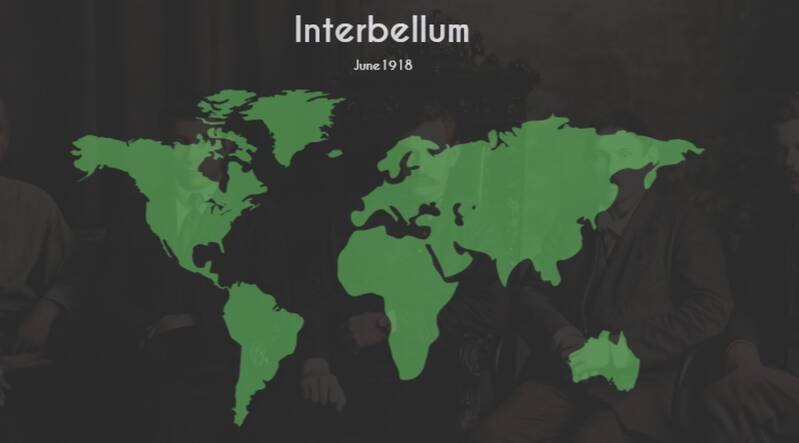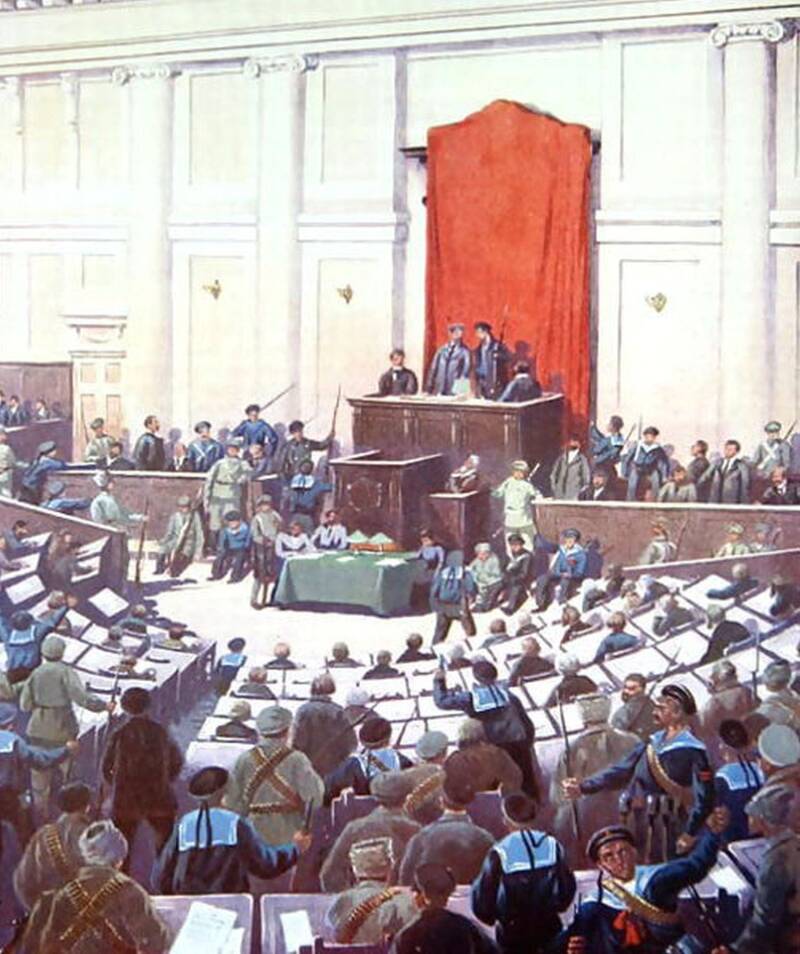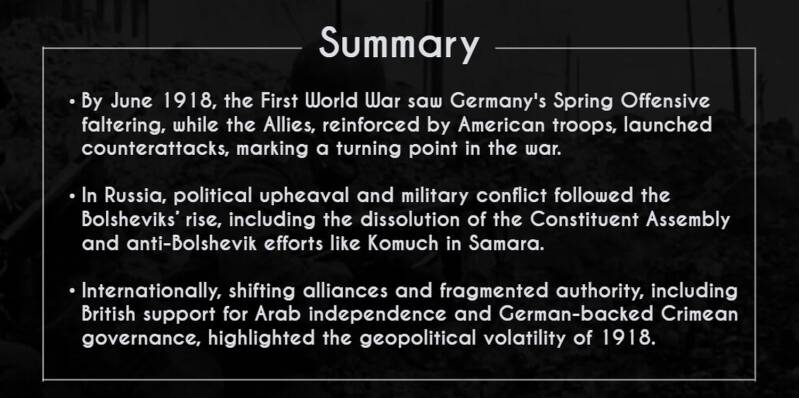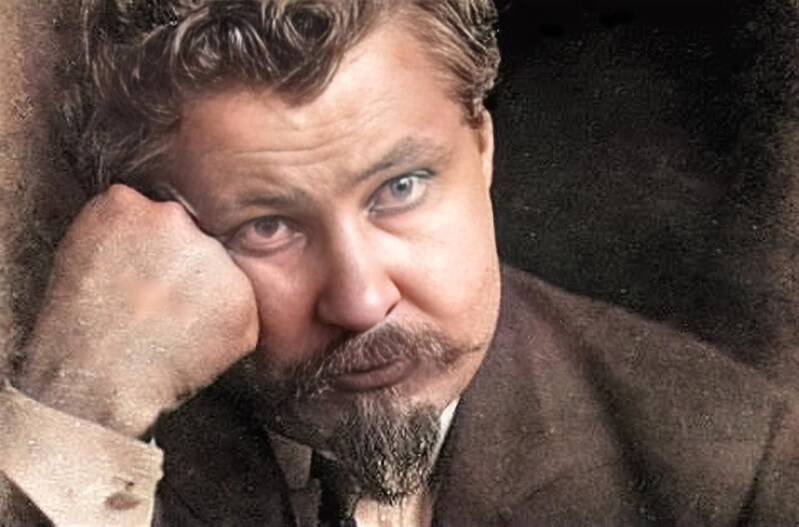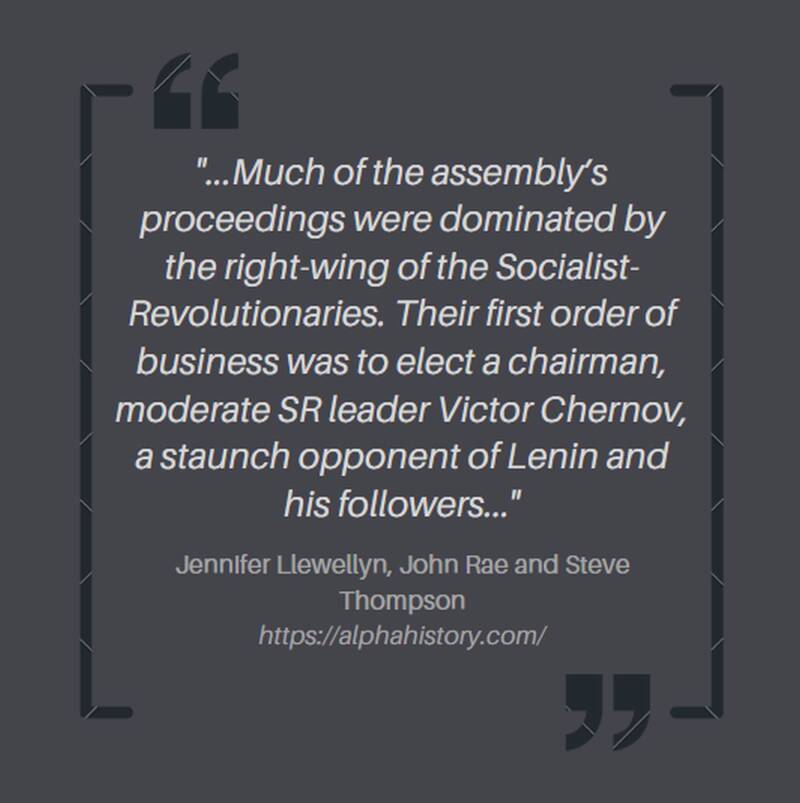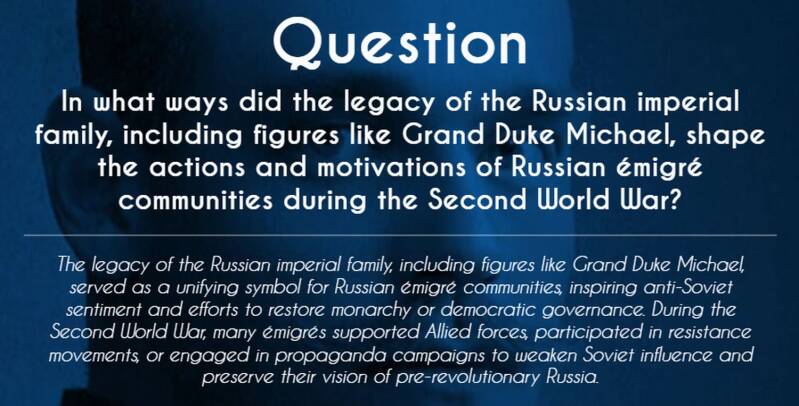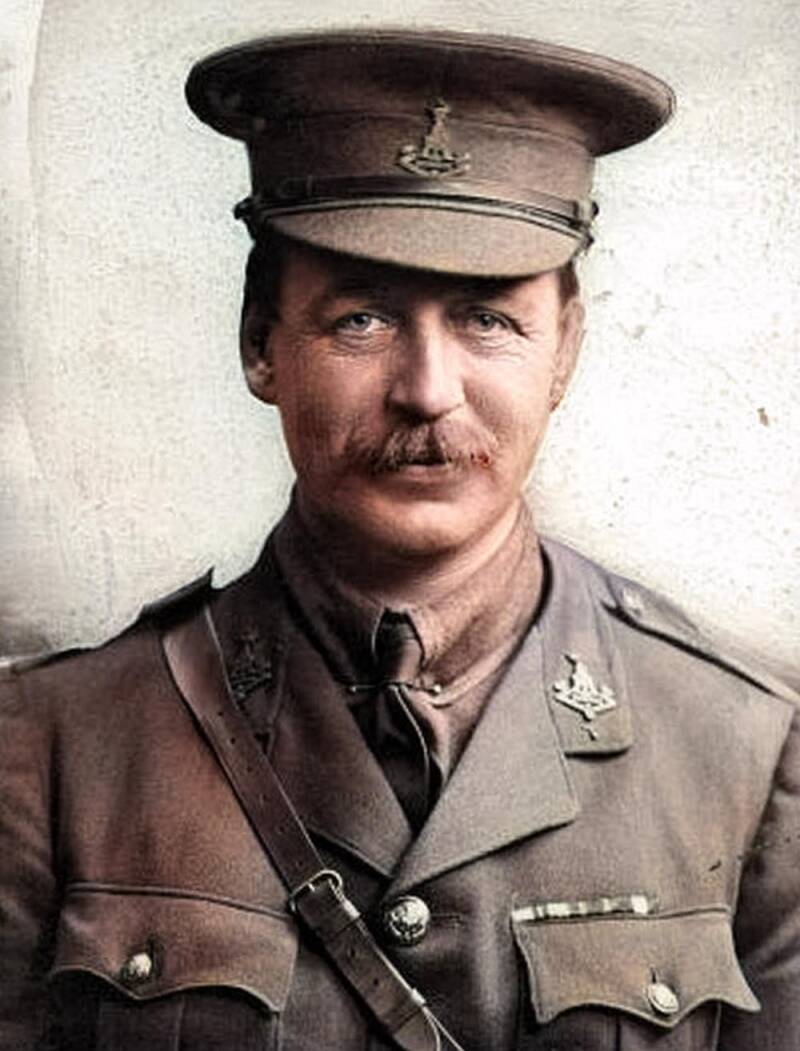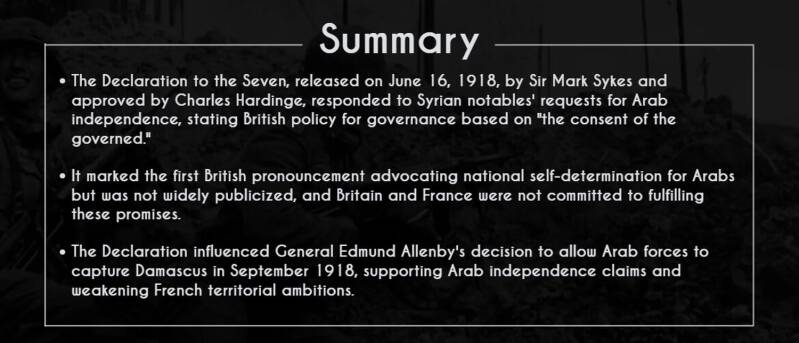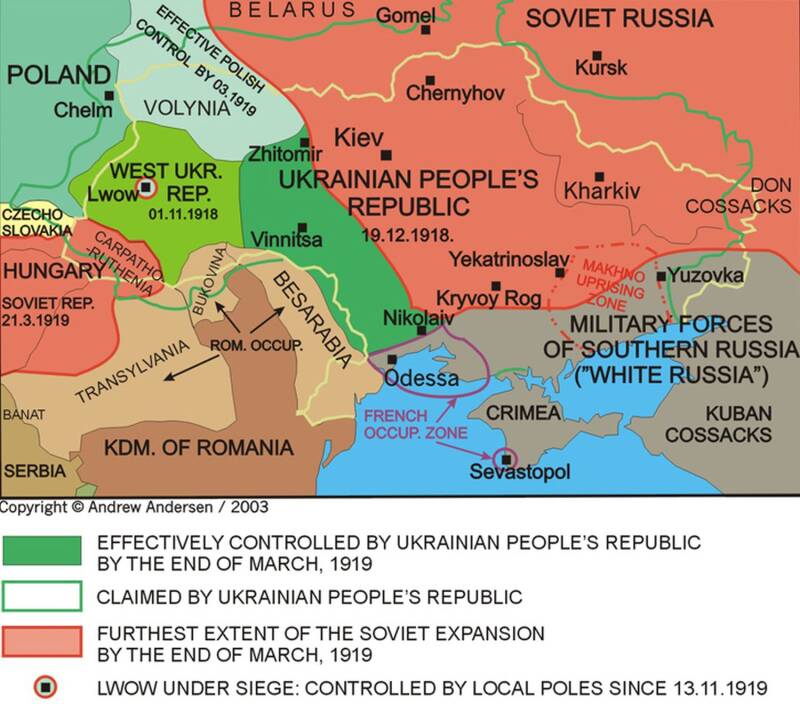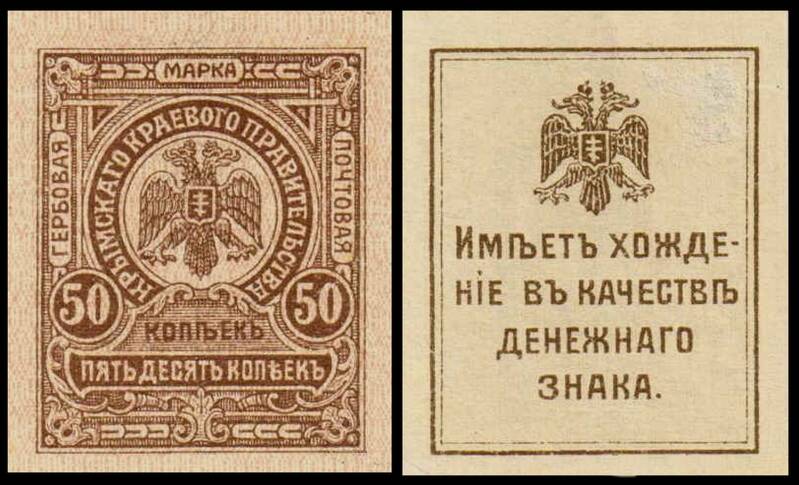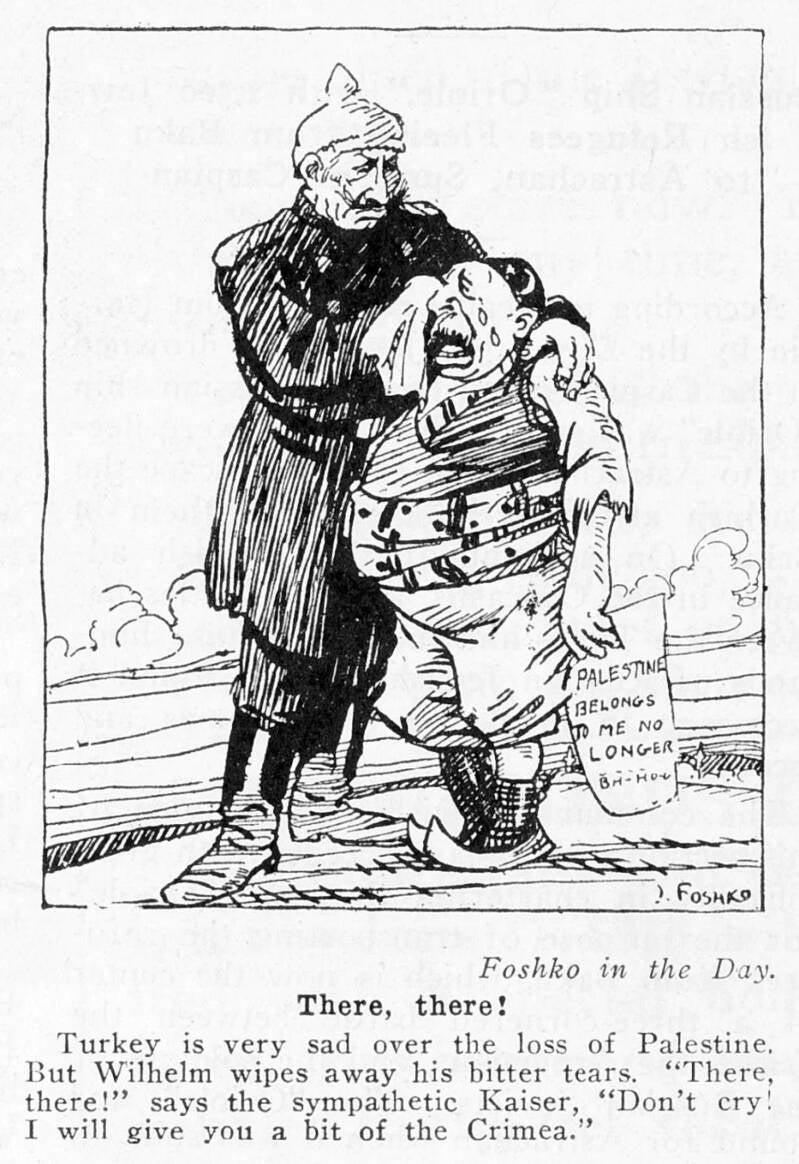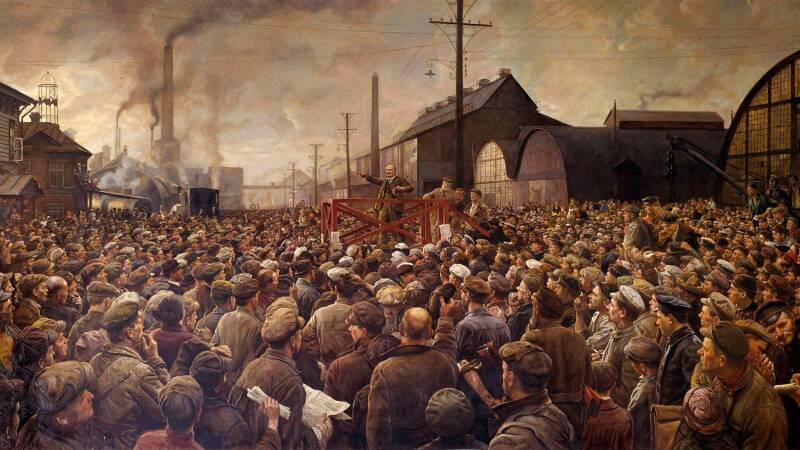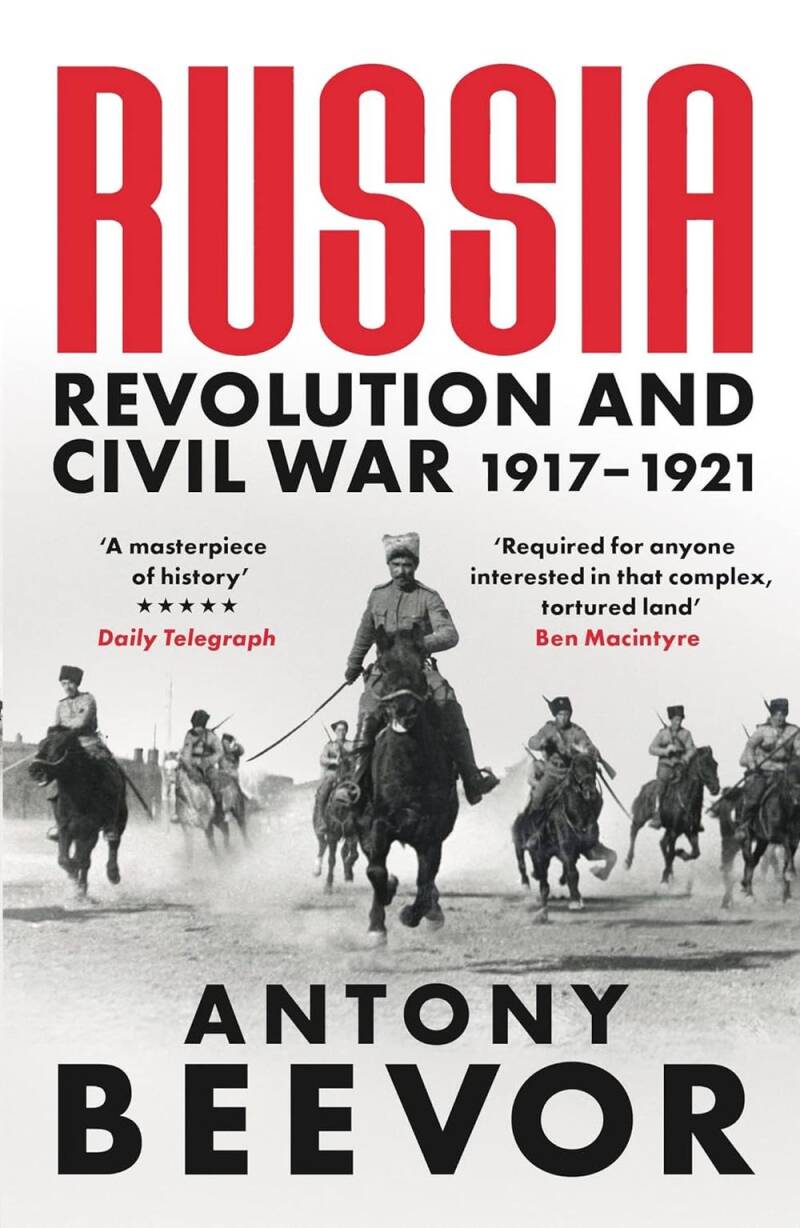A month of chaos and resistance
Revolts, counterattacks, assassinations, and shifting global powers
By June 1918, the First World War saw Germany’s Spring Offensive faltering, while the Allies, reinforced by American troops, launched counterattacks, marking a turning point toward eventual Allied victory.
Elsewhere post-revolutionary Russia was a landscape of political upheaval, social turmoil, and military conflict.
Amid the collapse of the Romanov dynasty and the rise of the Bolshevik regime, various factions sought to shape the future of the nation.
This period saw the brief existence of the Russian Constituent Assembly, an elected body tasked with drafting a new constitution.
The Romanov's - Imperial Russia's ruling dynasty. By June 1918, the collapse of the Romanov dynasty had plunged Russia into chaos, with the Bolsheviks consolidating power amid civil war. The abdication of Tsar Nicholas II dismantled centuries of autocratic rule, destabilizing the Eastern Front and enabling Germany to impose the Treaty of Brest-Litovsk. The power vacuum fueled rival factions, intensifying the Russian Civil War. Globally, the fall of the monarchy symbolized the decline of imperial systems and reshaped alliances, influencing post-war geopolitical landscapes.
https://www.reddit.com/r/Colorization/comments/71wyj8/colorized_last_imperial_russian_family_circa/
...aimed to restore democratic institutions...
Boris Zvykorin’s depiction of Red Guards in the Constituent Assembly.
https://alphahistory.com/russianrevolution/constituent-assembly/
However, the Assembly's dissolution by the Bolsheviks in January 1918 sparked widespread discontent, leading to the formation of the Committee of Members of the Constituent Assembly (Komuch) in June of the same year.
Komuch, comprising mainly Socialist-Revolutionaries, emerged in Samara as an anti-Bolshevik government that aimed to restore democratic institutions.
Meanwhile, the assassination of Grand Duke Michael Alexandrovich, a potential rival to Bolshevik power, further destabilized the political environment.
Constantinople, capital of the Ottoman Empire in 1890. The breakup of the Ottoman Empire after the First World War created tensions as former territories were divided under Western mandates. Arbitrary borders ignored ethnic and religious diversity, fostering conflicts in the Middle East. Nationalist movements, colonial control, and rivalries over resources fueled unrest, leaving a legacy of instability and disputes.
https://rarehistoricalphotos.com/color-photos-constantinople-1890/
...reflecting broader tensions...
Internationally, the geopolitical landscape was also shifting. The British Declaration to the Seven in June 1918 signalled a tentative support for Arab independence, reflecting broader tensions over the future of former Ottoman territories.
In Crimea, the formation of a regional government under German protection highlighted the fragmentation of authority in the former Russian Empire.
These events, occurring in quick succession, underscore the volatility of 1918, a year marked by efforts to both consolidate and challenge emerging powers across the Russian Empire and beyond.
The Crimea in 1855. By 1918, Crimea experienced turmoil as the Russian Civil War intensified following the collapse of the Romanov dynasty. German forces briefly occupied the region after the Treaty of Brest-Litovsk, but competing factions, including Bolsheviks, White forces, and Crimean Tatars, vied for control, leaving the peninsula in a state of instability.
Committee of Members of the Constituent Assembly, 8th June 1918
The Russian Constituent Assembly was an elected body tasked with drafting a new constitution for post-revolutionary Russia. Elections were held in November 1917, with the Socialist-Revolutionary Party winning the majority.
However, the Bolsheviks, who gained significant support in urban areas, saw the Assembly as a threat to their power.
On the 5th January 1918, the Assembly convened but was dissolved by the Bolsheviks the next day, after just one session.
This dissolution led to widespread discontent and contributed to the Russian Civil War, as various anti-Bolshevik groups, including the Committee of Members of the Constituent Assembly (Komuch), sought to restore democratic governance.
Viktor Deni’s propaganda poster, ‘Constituent Assembly’, suggesting bourgeois corruption.
https://alphahistory.com/russianrevolution/constituent-assembly/
...been dissolved by the Bolsheviks...

In response, anti-Bolshevik factions formed the Committee of Members of the Constituent Assembly (Komuch) on the 8th June 1918, in Samara, following the city's occupation by the Czechoslovak Legion.
Komuch aimed to represent the now defunct Russian Constituent Assembly, which had been dissolved by the Bolsheviks.
Viktor Chernov, a prominent Socialist-Revolutionary leader, was instrumental in the Russian Constituent Assembly, advocating for democratic reforms. After its dissolution by the Bolsheviks, he influenced the formation of the Committee of Members of the Constituent Assembly (Komuch), seeking to restore democratic governance during the Russian Civil War.
https://it.rbth.com/societa/storie/2017/05/26/chernov_770812
...the highest authority in Russia...
Initially, Komuch comprised five Socialist-Revolutionaries: Vladimir Vol'skii (chairman), Ivan Brushvit, Prokopiy Klimushkin, Boris Fortunatov, and Ivan Nesterov.
They proclaimed themselves the highest authority in Russia, reinstating various democratic freedoms, including an eight-hour workday and the legalization of trade unions and factory committees.
Soviet decrees were nullified, and industries returned to their previous owners, allowing for private enterprise.
Initial members of the committee. From left to right: Ivan Brushvit, Prokopiy Klimushkin, Boris Fortunatov, Vladimir Volsky (chairman) and Ivan Nesterov.
https://en.wikipedia.org/wiki/Committee_of_Members_of_the_Constituent_Assembly
...the restoration of democratic institutions and freedoms...
Komuch grew as former Constituent Assembly members arrived in Samara, reaching 96 members by September 1918.
Brushvit persuaded the Czechoslovak Legion to support their cause, and Komuch announced the restoration of democratic institutions and freedoms, albeit while providing opportunities for landowners to reclaim confiscated lands.
They established the People's Army to protect property and mobilize support.
From June to August 1918, Komuch expanded its influence into the provinces of Simbirsk, Kazan, Ufa, and Saratov.
However, in September, the People's Army faced significant defeats by the Soviet Red Army, losing control of key territories.
Red Army soldiers photographed during the Russian Civil War. In 1918, they were responsible for the Peoples Army losing significant territories.
https://www.britannica.com/place/Russia/The-Civil-War-and-War-Communism-1918-21
Komuch participated in the State Conference in Ufa with the Provisional Siberian Government, establishing the short-lived Provisional All-Russian Government.
However, following Admiral Aleksandr Kolchak's coup in November 1918, General Vladimir Kappel dissolved Komuch and other provisional institutions, marking the end of Komuch's influence.
Assassination of Grand Duke Michael Alexandrovich of Russia, 12th June 1918
Grand Duke Michael Alexandrovich of Russia (4 December 1878 – 13 June 1918) was the youngest son of Emperor Alexander III and the youngest brother of Nicholas II.
Following Nicholas II's abdication in 1917, Michael was proclaimed "Emperor Michael II," but he declined to assume power the next day.
Born during his grandfather Alexander II's reign, Michael was fourth in line to the throne after his father and brothers, Nicholas and George.
After Alexander II's assassination in 1881, Michael became third in line. In 1894, following his father's death, he became second in line.
When George died in 1899, Michael became heir presumptive. However, the birth of Nicholas's son Alexei in 1904 pushed Michael back to second in line. Due to Alexei's hemophilia, Michael believed he might still become heir.
The assassination of Grand Duke Michael Alexandrovich of Russia in 1918 marked a pivotal moment in the Russian Revolution, symbolizing the end of the Romanov dynasty and significantly shifting global politics by intensifying the spread of revolutionary movements worldwide.
https://www.russianhistorymuseum.org/2020/12/16/about-grand-duke-michael/
...Michael brought Natalia to St. Petersburg, where society shunned her...
Michael scandalized the imperial court by having an affair with Natalia Sergeyevna Wulfert, a married woman. Nicholas II sent him to Orel, but Michael continued to see Natalia.
They had a son, George, in 1910, and Michael brought Natalia to St. Petersburg, where society shunned her.
In 1912, Michael married Natalia, hoping to be removed from the line of succession. The couple then lived in exile in France, Switzerland, and England.
During the First World War, Michael returned to Russia and led a cavalry division. After Nicholas abdicated in 1917, Michael was named his successor but deferred acceptance until ratified by an elected assembly.
Russian Cavalry photographed in 1915. During the First World War, Grand Duke Michael led a cavalry division.
...their bodies were stripped, buried, and valuables stolen...
Gavril Myasnikov, a Russian communist revolutionary, who led the team that assassinated Grand Duke Michael Alexandrovich
On the 11th March 1918, Michael and his secretary, Johnson, were sent to Perm by the Council of the People's Commissars, including Lenin and Stalin.
The arduous eight-day journey in harsh conditions led to Michael's initial stay in a hotel, but he was soon jailed by the local Soviet.
Released on 9 April, he moved to the best hotel in Perm with Johnson and two servants.
Natalia secured a travel permit in May, reuniting briefly with Michael.
Amidst the turmoil of the War, Czech troops fought for independence, causing fear of entrapment.
Natalia left on 18 May. On 12th June 1918, local Bolsheviks, led by Gavril Myasnikov, murdered Michael and Johnson in a forest near Motovilikha.
Their bodies were stripped, buried, and valuables stolen. Soviet authorities spread false stories of Michael's abduction.
Natalia eventually escaped to Kiev and was evacuated by the British Navy. Michael was posthumously rehabilitated in 2009.
Publication of the Declaration to the Seven, 16th June 1918
The Declaration to the Seven, written by Sir Mark Sykes and approved by Charles Hardinge, was released on June 16, 1918, in response to a memorandum from seven Syrian notables in Cairo.
This memorandum, influenced by the Balfour Declaration and the 1917 Bolshevik publication of the secret 1916 Sykes-Picot Agreement, requested a guarantee of Arabia's ultimate independence.
The Declaration stated British policy that the future government of Ottoman Empire regions occupied by the First World War Allies should be based on "the consent of the governed."
Mark Sykes, who wrote the Declaration to the Seven.
A 1900 map showing the Ottoman Empire. The 1918 Declaration to the Seven promised national self-determination for Arabs in Ottoman territories. However, British and French reluctance to relinquish control after the First World War undermined these promises, highlighting the complexities of post-war territorial and political arrangements in the region.
https://www.davidrumsey.com/luna/servlet/detail/RUMSEY~8~1~328279~90096761:Map-of-the-Ottoman-Empire
...weakening French territorial ambitions...
The Declaration is significant as the first British statement to Arabs promoting national self-determination, aligning with Woodrow Wilson's doctrine.
However, Britain and France were unwilling to fully honor these promises or relinquish control gained from defeating the Ottoman Empire.
The document's limited publicity may explain General Edmund Allenby's decision to allow Arab forces to capture Damascus in September 1918, thus supporting Arab independence claims and weakening French territorial ambitions.
Formation of the Crimean Regional Government, June 25, 1918
Following Russia's October Revolution in 1917, an ethnic Tatar government proclaimed the Crimean People's Republic.
This republic was soon overrun by Bolshevik forces in early 1918, leading to the establishment of the Taurida Soviet Socialist Republic.
However, it was subsequently taken over by the forces of the Ukrainian People's Republic with military assistance from the German Empire during the Crimean Offensive at the end of April 1918.
...the regional government remained separate from Ukraine...

The first Crimean Regional Government was established on 25 June 1918 under German protection, with Lipka Tatar General Maciej (Suleyman) Sulkiewicz as prime minister, minister of interior, and military affairs.
Despite efforts by Ukraine to exert control over Crimea, the regional government remained separate from Ukraine, although there were discussions in September and October about forming a federation between the two entities.
The Crimean region saw frequent border changes and power struggles during and after the First World War.
https://www.dcstamps.com/crimean-border-government-1918-1919/
...began to crumble in early 1919...
Following the withdrawal of German troops from Crimea, Sulkiewicz, who had become unpopular, fell from power on the 25th November 1918.
He was succeeded by Crimean Karaite politician and former Kadet member Solomon Krym.
This new liberal, anti-Bolshevik regime included fellow former Kadet member Maxim Vinaver as foreign minister and Vladimir D. Nabokov as minister of justice.
In late November 1918, troops from the Allies of the First World War, primarily French and Greek, landed in Crimea.
However, these troops withdrew in April 1919 after the loss of Odessa (now Odesa).
The Krym government, also known as the Crimean Frontier Government, began to crumble in early 1919 due to tensions with the Russian White movement's Volunteer Army under Anton Denikin, who suspected the loyalty of its main figures.
The collapse of the Central Powers of the First World War and the withdrawal of the Allies left Crimea fully dependent on Russia.
Solomon Krym, Leader of the Crimean Border Government.
https://www.dcstamps.com/crimean-border-government-1918-1919/
Crimean Regional Government postage stamp, 1919.
On 2 April 1919, the Soviet Red Army occupied Simferopol, leading to the dissolution of the second Crimean Regional Government.
The Crimean Socialist Soviet Republic was then established, only to be retaken by White forces in June 1919. The Whites, under Denikin and later Pyotr Wrangel, held Crimea until November 1920.
Conclusion
The events of June 1918 marked a pivotal month of transformation that helped shape global politics in the 1920s and 1930s.
The dissolution of the Russian Constituent Assembly and the subsequent civil war illustrated the fragility of democratic ideals in the face of authoritarian regimes, laying the groundwork for Soviet dominance and the ideological battles that defined the interwar period.
Grand Duke Michael’s assassination symbolized the violent demise of the old imperial order, while the rise of Bolshevik power reshaped Russia into a revolutionary force, influencing communist movements worldwide.
The Declaration to the Seven, while promising self-determination, exposed the contradictions of imperial powers seeking to balance colonial ambitions with emerging nationalist demands, fueling tensions that would persist in the Middle East throughout the 20th century.
A portrait of Egyptian President Abdul Nasser leaning against a destroyed Egyptian tank. Sinai, Egypt. 1967, during the Six Day War. The Declaration to the Seven, issued by Arab leaders in 1945, emphasized the importance of unity and support for Palestine against foreign intervention. This sentiment fueled the Arab-Israeli conflict, directly linking to later events like the Six-Day War in 1967. Arab states' resistance to Israeli expansion, alongside nationalist and territorial disputes, escalated tensions. The unresolved issues of land and sovereignty laid the foundation for continued regional instability, influencing subsequent Middle Eastern conflicts.
https://www.magnumphotos.com/newsroom/conflict/the-six-day-war/
...fostering nationalist movements and ideological rivalries...
Similarly, the Crimean Regional Government highlighted the fragmentation of authority in post-revolutionary Russia, reflecting the broader struggles of nationalist and regional movements against larger geopolitical forces.
These developments contributed to the realignment of power structures, fostering nationalist movements and ideological rivalries.
As the 1920s and 1930s unfolded, these forces crystallized into the competing blocs of fascism, communism, and liberal democracy, setting the stage for the global conflicts and alliances that would dominate the Second World War and beyond.
The Crimean Regional Government exemplified post-revolutionary Russia's tenuous authority, an example of smaller nationalist and regional movements struggling with larger geopolitical forces.
Lenin addresses the masses. As the 1920s and 1930s unfolded, the ideological and political forces of fascism, communism, and liberal democracy solidified into competing blocs, each vying for dominance. Lenin’s Bolshevik Revolution of 1917 and the establishment of the Soviet Union marked the rise of communism as a global force, challenging capitalist and fascist ideologies. These tensions shaped alliances and rivalries that would escalate into the global conflicts of the Second World War, influencing geopolitics and alliances in the Cold War and beyond.
https://www.history.com/topics/european-history/russian-revolution
Painting by Isaak Brodsky, National Gallery, Prague, Czech Republic. Photo by Leemage/Corbis via Getty Images
Further reading
"Russia: Revolution and Civil War 1917-1921" by Antony Beevor provides a vivid and comprehensive account of one of history’s most tumultuous periods. Covering the collapse of the Romanov dynasty, the Bolshevik rise to power, and the brutal civil war, Beevor examines the political chaos, human suffering, and international intrigue that defined the era. With meticulous research and gripping storytelling, the book highlights the revolutionary fervor and devastating consequences of a conflict that shaped modern Russia.
"Hundred Days: The Campaign That Ended World War I" by Nick Lloyd delves into the final phase of the First World War, focusing on the Allied offensive from August to November 1918 that decisively ended the conflict. Drawing on detailed research, Lloyd explores the strategies, battles, and leadership of figures like Haig, Foch, and Pershing. The book highlights the pivotal role of combined arms tactics, the contributions of American forces, and the human cost of achieving victory.
"A History of Crimea: From Antiquity to the Present" by Kerstin S. Jobst offers a sweeping exploration of Crimea's complex past, emphasizing pivotal moments, including 1918 when the region faced political fragmentation and external intervention. Jobst examines the Crimean Regional Government under German protection, its struggles for autonomy, and its role within broader geopolitical shifts during the First World War. The book weaves Crimea’s 1918 turmoil into a broader narrative of cultural, political, and historical evolution over centuries.
"History of the Soviet Union: 1917-1991" by Geoffrey Hosking provides a comprehensive account of the Soviet Union's creation, development, and eventual collapse. It delves into key events like the 1917 Bolshevik Revolution, the civil war, and the establishment of the communist state. Hosking examines Stalinist policies, Second World War's impact, the Cold War era, and reforms under Gorbachev. The book highlights the Soviet Union's ideological, political, and social transformations across seven decades, offering a balanced, insightful analysis.
"A Peace to End All Peace" by David Fromkin explores the geopolitical reshaping of the Middle East following the First World War and the fall of the Ottoman Empire. The book examines how Allied decisions, particularly by Britain and France, created artificial borders and unstable states, sowing seeds of conflict. Fromkin critiques the 1918 peace process and its long-term repercussions, offering a compelling analysis of how imperial ambitions shaped the modern Middle East and its enduring challenges.
"The Bolsheviks in Russian Society: The Revolution and the Civil Wars," edited by Vladimir N. Brovkin, explores the role of the Bolshevik Party during the Russian Revolution and the ensuing Civil War. Through various scholarly contributions, the book analyzes how Bolshevik policies and their interactions with Russian society influenced the course of the revolution. It delves into the complexities of Bolshevik governance, social upheaval, and the Civil War's impact on Russia's political and social structure.
Sources:
https://www.reddit.com/r/Colorization/comments/71wyj8/colorized_last_imperial_russian_family_circa/
https://alphahistory.com/russianrevolution/constituent-assembly/
https://rarehistoricalphotos.com/color-photos-constantinople-1890/
https://culture.voicecrimea.com.ua/en/plans-for-the-crimea-of-the-german-occupation-administration/
https://www.artpal.com/sovereign120?i=110375-577
Alia El Bakri https://encyclopedia.1914-1918-online.net/article/revolutions-and-rebellions-arab-revolt-ottoman-empiremiddle-east/
https://www.history.com/this-day-in-history/britain-and-france-conclude-sykes-picot-agreement
https://alphahistory.com/russianrevolution/constituent-assembly/
https://it.rbth.com/societa/storie/2017/05/26/chernov_770812
https://en.wikipedia.org/wiki/Committee_of_Members_of_the_Constituent_Assembly
https://www.britannica.com/place/Russia/The-Civil-War-and-War-Communism-1918-21
https://www.russianhistorymuseum.org/2020/12/16/about-grand-duke-michael/
https://commons.wikimedia.org/wiki/File:Russian_cavalry.jpg
https://en.wikipedia.org/wiki/Gavril_Myasnikov
https://en.wikipedia.org/wiki/Mark_Sykes
https://www.davidrumsey.com/luna/servlet/detail/RUMSEY~8~1~328279~90096761:Map-of-the-Ottoman-Empire
https://www.dcstamps.com/crimean-border-government-1918-1919/
https://en.wikipedia.org/wiki/Crimean_Regional_Government
https://www.magnumphotos.com/newsroom/conflict/the-six-day-war/
https://www.history.com/topics/european-history/russian-revolution
Painting by Isaak Brodsky, National Gallery, Prague, Czech Republic. Photo by Leemage/Corbis via Getty Images

